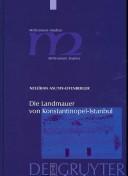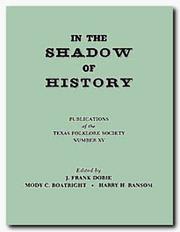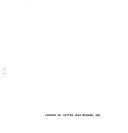| Listing 1 - 10 of 13 | << page >> |
Sort by
|
Book

ISBN: 9791036543319 Year: 2019 Publisher: [S.I] : LARHRA,
Abstract | Keywords | Export | Availability | Bookmark
 Loading...
Loading...Choose an application
- Reference Manager
- EndNote
- RefWorks (Direct export to RefWorks)
Cent ans après, la question laïque est de retour, dans un contexte singulièrement transformé, et le Colloque organisé à Rome en mai 2002 dans le cadre du Centre culturel Saint-Louis de France dépendant de l’Ambassade de France près le Saint-Siège, apparaît avec un peu de recul comme plongé dans la chaleur de l’actualité. En un peu plus d’un an le concept de laïcité et la place des religions dans la société et par rapport à l’État, se sont imposés comme l’un des axes majeurs du débat public en France et en Europe. En effet, la question laïque n’est plus une question franco-française : elle concerne l’ensemble des États européens qui, sous le double effet de la progression de l’Union européenne vers une plus forte intégration politique et les bouleversements introduits dans les équilibres religieux par une immigration musulmane plus nombreuse et plus identitaire, sont appelés à s’interroger à nouveaux frais sur leurs relations avec les religions. La laïcité a une dimension historique et philosophique, juridique et politique, culturelle surtout. C’est pourquoi ce colloque de Rome a voulu se caractériser d’abord par la diversité des disciplines des intervenants (politiques, hauts fonctionnaires, historiens, philosophes, juristes, sociologues), par la diversité de leurs origines nationales et religieuses. De ce point de vue, cette rencontre a été aussi une rencontre interreligieuse. Là est l’ambition de ce livre : offrir une méthode d’approche d’un grand problème de notre temps aux profondes racines historiques, à travers une approche comparatiste, interdisciplinaire et interreligieuse.
Religion --- History --- droit --- laïcité --- époque contemporaine --- Saint-Siège --- Union européenne --- rencontre interreligieuse --- droit européen --- loi anticléricale
Book
ISBN: 140735924X Year: 2022 Publisher: Oxford, UK : BAR Publishing,
Abstract | Keywords | Export | Availability | Bookmark
 Loading...
Loading...Choose an application
- Reference Manager
- EndNote
- RefWorks (Direct export to RefWorks)
This text studies the archaeological remains of the endogenous fortifications of eastern Senegal during the Atlantic slave trade. In his first part, he addresses the generalities by dealing with the determinants of the establishment of fortifications in West Africa. Following a proposal for the classification of West African endogenous fortifications, it gives an overview of the different types of fortifications present from Senegal to Cameroon. In the second part, he presents the military and political history of the state entities of the left bank of the Falémé (the Fulani kingdom of Boundou, and the Malinké kingdoms of Dantila, Sirimana, and Beledougou), as well as the defensive structures that served as the basis for this history. As much as possible, each ruin of fortifications is studied under an archaeological and historical approach.
Fortification --- Slave trade --- History. --- Fortification, Primitive --- Forts --- Military engineering --- Siege warfare

ISBN: 1282196065 9786612196065 3110203995 311019645X Year: 2008 Publisher: Berlin/Boston De Gruyter
Abstract | Keywords | Export | Availability | Bookmark
 Loading...
Loading...Choose an application
- Reference Manager
- EndNote
- RefWorks (Direct export to RefWorks)
Die Landmauer von Konstantinopel gehört zu den bedeutendsten und größten Wehranlagen der Spätantike. Die vorliegende Arbeit behandelt die Baugeschichte und Topographie der Theodosianischen Landmauer und der Blachernen-Mauer (sog. Mauer der XIV. Region, Komnenen-Mauer, Mauerabschnitt zwischen Komnenen-Mauer und Goldenem Horn). Schwerpunkte bilden das theodosianische Baukonzept der Doppelmauer, die Anzahl der theodosianischen Türme, die zeitliche Einordnung des Goldenen Tors und des Rahmenwerks am Vortor, die Baugeschichte der Tore, die Ermittlung der byzantinischen Namen der Tore zwischen dem wiederentdeckten Romanos-Tors und Edirnekapı, die Lokalisierung des Polichnion von Kaiser Ioannes V. Palaiologos (Mermerkule), die Identifizierung weiterer Örtlichkeiten im Bereich der Theodosianischen Mauer (Polyandrion, Myriandrion, Mesoteichion), die Topographie und Baugeschichte der Komnenen-Mauer einschließlich der Identifikation der Tore der Blachernen-Mauer sowie das Problem der letzten Kaiserresidenz von Konstantinopel (Tekfur Sarayı). In weiteren Abschnitten werden das Mauerwerk dokumentiert und untersucht und ein Katalog der Spolien vorgelegt. Zwei Exkurse widmen sich dem spätbyzantinischen Straßensystem von Konstantinopel und zwei Istanbul-Karten von Piri Reis.
City walls --- Fortification --- Fortification, Primitive --- Forts --- Military engineering --- Siege warfare --- Village walls --- Walls --- Architecture. --- Building Technology. --- Constantinople. --- Istanbul.
Book

ISBN: 9782953792867 2953792864 9791036543111 Year: 2019 Volume: 15 Publisher: [S.I] : LARHRA,
Abstract | Keywords | Export | Availability | Bookmark
 Loading...
Loading...Choose an application
- Reference Manager
- EndNote
- RefWorks (Direct export to RefWorks)
La troisième journée d’études consacrée par l’équipe RESEA du LARHRA à l’antiromanisme catholique des temps post-tridentins s’est intéressée à l’expression de sentiments antiromains dans l’historiographie catholique. À l’époque moderne, le développement d’une historiographie ecclésiastique antiromaine au sein du catholicisme a d’emblée été tributaire de deux grands modèles élaborés dans la deuxième moitié du xvie siècle et qui s’inséraient dans le débat entre catholiques et protestants. De 1559 à 1574 paraissent à Bâle les treize centuries de l’Ecclesiastica historia, dites Centuries de Magdebourg. Très imposante, l’œuvre propose une version luthérienne de l’histoire du christianisme. Après la conclusion du concile de Trente, la papauté s’est rapidement préoccupée de faire répondre aux centuriateurs de Magdebourg. En publiant ses Disputationes de controuersiis christianæ fidei (1586-1593), Robert Bellarmin s’est chargé de réfuter les arguments théologiques que les Centuries de Magdebourg avaient développés, tandis que son collègue Cesare Baronio, plus connu sous le nom latinisé de Baronius, faisait paraître à Rome, entre 1588 et 1607, les douze volumes de ses Annales ecclesiastici, qui se faisaient fort d’anéantir par leur érudition la validité des analyses historiques des protestants. À la fin du xvie siècle, l’historiographie ecclésiastique européenne est clairement le lieu d’affrontements confessionnels dont on va retrouver la trace proprement historiographique jusqu’au xixe siècle. L’écriture de l’histoire devient pour les catholiques un domaine de choix où manifester leur opposition à Rome et aux prétentions ecclésiales et temporelles du Saint-Siège. Les différentes contributions ici réunies permettent de mettre en lumière les racines gallicanes et plus largement régalistes du libéralisme contemporain, sourde transformation par laquelle l’historiographie de l’Église a longtemps été travaillée en France, en Italie et en Allemagne et dont la journée d’études…
Historiographie religieuse --- --Église catholique --- --Historiographie religieuse --- Église catholique --- Religion --- History --- papauté --- gallicanisme --- catholicisme posttridentin --- antiromanisme --- infaillibilité pontificale --- historiographie catholique --- Saint-Siège --- libéralisme
Book
Year: 2019 Publisher: Northeastern University Press
Abstract | Keywords | Export | Availability | Bookmark
 Loading...
Loading...Choose an application
- Reference Manager
- EndNote
- RefWorks (Direct export to RefWorks)
Drawing on extensive primary sources, including ward tax assessors' Taking Books, church records, census records, birth and marriage records, newspaper accounts, and town directories, Jacqueline Barbara Carr brings to life Boston's remarkable rebirth as a flourishing cosmopolitan city at the dawn of the nineteenth century. She examines this watershed period in the city's social and cultural history from the perspective of the town's ordinary men and women, both white and African American, recreating the determined community of laborers, artisans, tradesmen, mechanics, and seamen who demonstrated an incredible perseverance in reshaping their shattered town and lives. Originally published by Northeastern University Press in 2005. With a new foreword by Jonathan M. Chu.
Siege of Boston (Massachusetts : 1775-1776) --- American Revolution (1775-1783) --- 1700-1799 --- United States. --- Massachusetts --- United States --- Boston (Mass.) --- History --- Influence. --- Social conditions --- History of the Americas

ISBN: 058528475X 087074173X Year: 1939 Publisher: University of North Texas Press
Abstract | Keywords | Export | Availability | Bookmark
 Loading...
Loading...Choose an application
- Reference Manager
- EndNote
- RefWorks (Direct export to RefWorks)
Legends --- Folklore --- Anthropology --- Social Sciences --- Folk beliefs --- Folk-lore --- Traditions --- Folk tales --- Urban legends --- Ethnology --- Manners and customs --- Material culture --- Mythology --- Oral tradition --- Storytelling --- Folklore. --- Alamo (San Antonio, Tex.) --- Siege, 1836. --- Texas --- History --- Campaigns
Book
ISBN: 9782853996914 2853996913 2821882815 Year: 2008 Publisher: Aix-en-Provence : Publications de l'Université de Provence,
Abstract | Keywords | Export | Availability | Bookmark
 Loading...
Loading...Choose an application
- Reference Manager
- EndNote
- RefWorks (Direct export to RefWorks)
À la fin du Moyen Âge, la guerre de siège est l’essentiel et le contrôle des villes est un enjeu majeur. Elles ont les ressources matérielles, humaines et morales pour opposer à l’ennemi une résistance prolongée. La succession ou la simultanéité des conflits, petits ou grands, bouleverse leur quotidien. La confrontation des sources d’archives et des textes littéraires permet de prendre la mesure de ces modifications. Le logement des gens de guerre, troupes étrangères au corps social, à ses usages et à ses valeurs affecte les modes de vie. Les conditions de travail évoluent avec l’afflux des réfugiés, le ravage du plat pays, la mise en place d’une économie de guerre et les limitations de la circulation des personnes et des biens. La pression fiscale s’intensifie et grève les budgets. Les tensions s’accentuent et le tissu social se déchire. Les adversaires se livrent à une guerre de propagande qui trouble les esprits. Avec la paix, intervient le travail de mémoire nécessaire à la refondation du pacte social. Il se manifeste surtout par des cérémonies commémoratives et la rédaction de chroniques. Le récit des événements subit de nombreux avatars : travestissements, silences, recompositions, ajouts. Reste que de l’Italie à l’Espagne, des villes d’Empire à celles du royaume de France, les sources témoignent de manière concordante et impressionnante des souffrances des citadins.
Sièges (Histoire) --- --Siège --- --2006 --- --Aix-en-Provence --- --Sieges --- Sièges (Histoire) --- Sieges --- Cities and towns, Medieval --- Villes médiévales --- History --- Congresses. --- Congresses --- Histoire --- Congrès --- Cities and towns --- Military history --- Global cities --- Municipalities --- Towns --- Urban areas --- Urban systems --- Human settlements --- Sociology, Urban --- Histoire militaire --- --Ville --- --Colloque --- --actes --- Ville --- Siège --- Colloque --- Sieges - France - History - 14th century - Congresses --- Sieges - France - History - 15th century - Congresses --- Sieges - Europe, Western - History - 14th century - Congresses --- Sieges - Europe, Western - History - 15th century - Congresses --- Cities and towns - France - History - 14th century - Congresses --- Cities and towns - France - History - 15th century - Congresses --- Cities and towns - Europe, Western - History - 14th century - Congresses --- Cities and towns - Europe, Western - History - 15th century - Congresses --- Aix-en-Provence --- Europe --- villes --- XIVème siècle --- Moyen-âge --- XVème siècle --- guerre --- histoire militaire --- Guerre --- Guerre de siège --- Vie urbaine --- Aspect social --- Moyen âge --- Congrès

ISBN: 2903189331 2918887501 9782903189334 Year: 1989 Volume: 13 Publisher: Naples ; Paris : Centre Jean Bérard : diff. Les Belles Lettres,
Abstract | Keywords | Export | Availability | Bookmark
 Loading...
Loading...Choose an application
- Reference Manager
- EndNote
- RefWorks (Direct export to RefWorks)
Fortification --- Greeks --- Excavations (Archaeology) --- Caulonia (Italy) --- Antiquities. --- Archaeological digs --- Archaeological excavations --- Digs (Archaeology) --- Excavation sites (Archaeology) --- Ruins --- Sites, Excavation (Archaeology) --- Archaeology --- Ethnology --- Mediterranean race --- Fortification, Primitive --- Forts --- Military engineering --- Siege warfare --- Castelvetere (Reggio di Calabria, Italy) --- Italie --- fouille archéologique --- Kaulonia --- Antiquité --- fortifications
Book

ISBN: 273512648X 9782735126484 9782735111190 2735111199 2910023788 Year: 2020 Volume: 100 Publisher: Paris : Éditions de la Maison des sciences de l’homme,
Abstract | Keywords | Export | Availability | Bookmark
 Loading...
Loading...Choose an application
- Reference Manager
- EndNote
- RefWorks (Direct export to RefWorks)
Soixante-dix ans après le tome 1 du Manuel d’archéologie galloromaine d’Albert Grenier, Michel Reddé, Raymond Brulet, Rudolf Fellmann, Jan Kees Haalebos et Siegmar von Schnurbein proposent une nouvelle synthèse sur l’architecture militaire romaine dans les provinces des Gaules et des Germanies. La première partie analyse les différents types de constructions et de techniques observées dans les camps militaires, en replaçant l’évolution de cette architecture dans son contexte historique, de la conquête de la Gaule au milieu du Ve s. ap. J.-C. La seconde partie est un catalogue qui, sans prétendre à l’exhaustivité, présente les sites incontournables et d’autres moins connus, notamment en France. Chaque notice, bien documentée et toujours illustrée, est assortie d’une bibliographie. Cet ouvrage est le fruit d’une collaboration internationale à laquelle plus de cinquante auteurs ont été associés. Il s’adresse à des étudiants et à des chercheurs non spécialisés, qui y trouveront des informations commodes, à jour, rassemblées pour la première fois. This work is the outcome of international cooperation involving J over fifty authors. It is aimed at an audience of undergraduates and non-specialist researchers, who will find it useful for the conveniently packaged, up-to-date information gathered together for the first time Seventy years after the publication of Volume 1 of Albert Grenier’s Manuel d’archéologie gallo-romaine, Michel Reddc, Raymond Brulet, Rudolf Fellmann, Jan Kces Haalebos and 5iegmar von Schnurbein have prepared a new overview of Roman military architecture in the provinces of Gaul and Germania. The first part analyzes the different types of construction techniques observed in military camps, placing the development of this architecture within its historical context, from the conquest of Gaul to the middle of the fifth century AD. The second part is a catalogue which, while making no claim to be exhaustive, presents all the key sites alongside other…
Fortification --- Romans --- Excavations (Archaeology) --- History. --- France --- Gaul --- Antiquities, Roman. --- Fortification, Primitive --- Forts --- Military engineering --- Siege warfare --- Fortification - France - History. --- Romans - France. --- Excavations (Archaeology) - France. --- Fortification, Roman --- Military architecture --- Fortifications romaines --- Architecture militaire --- Fouilles (Archéologie) --- architecture militaire --- Gaule --- frontière --- enceinte --- Haut Empire --- Bas Empire --- fortification --- armée romaine --- Germanie --- limes --- Archeology --- Roman history
Book
ISBN: 1785700294 1785700278 9781785700279 9781785700293 9781785700286 1785700286 178570026X 9781785700262 1789256526 Year: 2016 Publisher: Oxford : Oxbow Books,
Abstract | Keywords | Export | Availability | Bookmark
 Loading...
Loading...Choose an application
- Reference Manager
- EndNote
- RefWorks (Direct export to RefWorks)
"Between 1975 and 1984 almost the entire area of the Roman fort of Segedunum in Wallsend was excavated under the direction of Charles Daniels, senior lecturer in the Department of Archaeology at Newcastle University. It is these excavations which form the subject of this publication. This comprehensive report on the structural remains (Vol. 1) and finds (Vol. 2) show clearly that Daniels' work represented one of the most ambitious and prolonged programs of fieldwork attempted on the northern frontier up to that point and has made Wallsend one of the most fully investigated of Roman forts in Britain. In most areas the remains were not excavated down to natural and so the remains revealed were predominantly those of the 2nd and 3rd centuries, with some late Roman features. Volume 1 describes first the stratigraphic sequences and excavation of the stone and timber buildings of the fort's central range: the granary, hospital, headquarters (principia), commanding officer's house (praetorium), the forehall fronting the principia and granary, and a long narrow building, perhaps a workshop, on the north side of the eastern via principalis. In the case of all but the praetorium these buildings were fully exposed. Later chapters cover the buildings in the northern third of the fort, revealed to be a group of six infantry barracks which underwent several phases of rebuilding and refurbishment including partial replacement by a stable block. Parts 4 and 5 examine the cavalry barracks in the southern part of the fort (retentura) and excavations of sections of the fort defenses on all four sides, particularly of discrete structures such as towers and gates. Volume 2, on the predominantly 2nd-3rd century material culture from the site, looks at the stonework, pottery, coins and small finds recovered. The stonework and ceramic building material provides information on the appearance of the fort and include a very rare stone latrine seat and a bench support. The pottery comprises samian, mortaria, including a large collection stamped by Anaus, amphorae and coarse wares. Other classes of artifact occur in comparatively small numbers, including colorless glass tablewares of the second and third centuries, 295 coins and c. 1000 small finds including some post-Roman pieces. Finally there is a detailed assessment of animal bone assemblages from a cistern and the Commanding Officer's house"--Publisher's summary.
Excavations (Archaeology) --- Fortification --- Material culture --- Animal remains (Archaeology) --- Fortification, Primitive --- Forts --- Military engineering --- Siege warfare --- Archaeological digs --- Archaeological excavations --- Digs (Archaeology) --- Excavation sites (Archaeology) --- Ruins --- Sites, Excavation (Archaeology) --- Archaeology --- Archaeozoology --- Zooarchaeology --- Zoology in archaeology --- Bones --- Animal paleopathology --- Culture --- Folklore --- Technology --- Methodology --- Segedunum Roman Fort Site (Wallsend, England) --- Wallsend (England) --- Wallsend Roman Fort Site (Wallsend, England) --- England --- Antiquities, Roman. --- Antiquities --- Fortification, Roman --- Fortifications romaines --- Fouilles (Archéologie) --- Culture matérielle --- Restes d'animaux (Archéologie) --- Wallsend (Angleterre) --- Antiquities, Roman --- Antiquités romaines
| Listing 1 - 10 of 13 | << page >> |
Sort by
|

 Search
Search Feedback
Feedback About
About Help
Help News
News